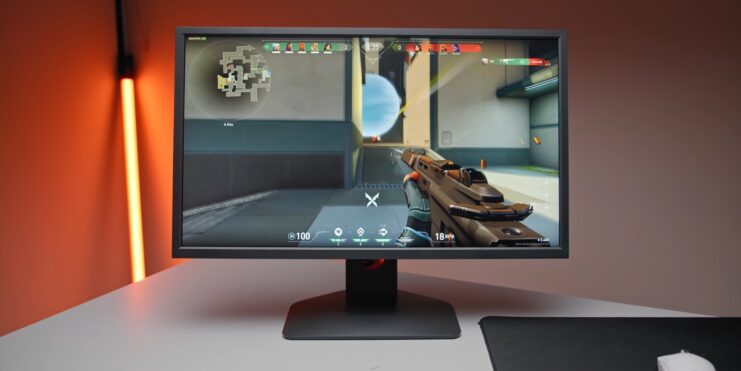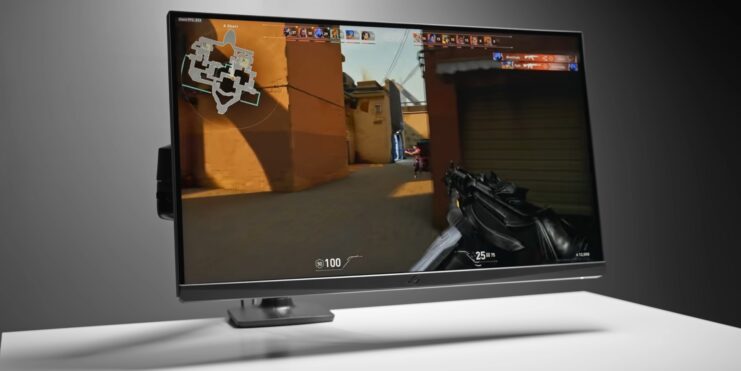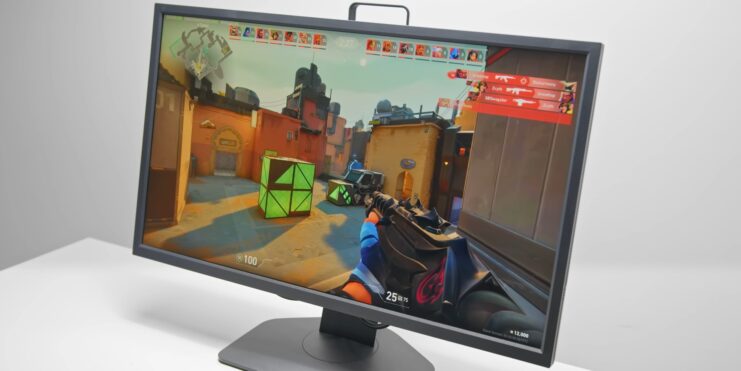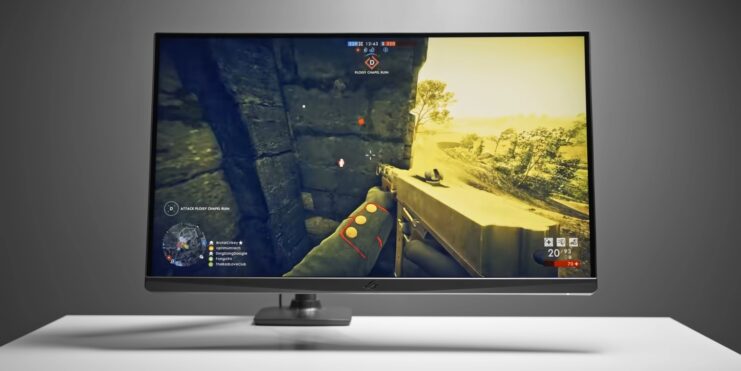Whether you’re a seasoned veteran or new to the gaming world, you might have heard about ‘Adaptive Sync’. Perhaps you’ve even toggled it on and off in your settings without really knowing what it does. But what really is Adaptive Sync? And does it make a significant difference to your gaming experience? The short answer is – absolutely! But let’s delve deeper and see how this technology works and why it’s essential for a smooth gaming experience.
The Basics: Frames, Refresh Rates, and Sync

Before we get into the details of Adaptive Sync, it’s crucial to understand some basic concepts related to gaming technology – frames, refresh rates, and synchronization.
A frame is a still image, and a series of these images displayed quickly creates the illusion of motion, much like a flipbook. The frequency at which these frames are shown on the screen is called the frame rate and is measured in frames per second (fps).
On the other hand, the refresh rate of a monitor is the number of times it updates with new images each second, measured in hertz (Hz). Typically, monitors have refresh rates of 60Hz, 120Hz, 144Hz, or even 240Hz.
Where synchronization comes in is in coordinating these two rates. When the frame rate and refresh rate don’t match, you may experience screen tearing or stuttering, which can disrupt your immersive gaming experience.
What Is Adaptive Sync?
Adaptive Sync is a technology designed to solve this synchronization problem. It’s a feature that allows a monitor to adjust its refresh rate dynamically to match the frame rate being output by the game, thus ensuring that each frame arrives in time for the monitor’s next refresh. By doing so, it eliminates screen tearing and stuttering, providing a smoother, more visually appealing gaming experience.
Adaptive Sync is a broad term for this technology. Within it, there are two primary standards you might come across – NVIDIA’s G-Sync and AMD’s FreeSync. Both work on the same principles, though they are optimized for their respective graphics cards.
3 Benefits
Now that we’ve got the basics down let’s look at why Adaptive Sync is a game-changer (pun intended).
1. Smoother Gaming Experience

The most significant advantage is the elimination of screen tearing and stuttering, leading to a smoother, more immersive gaming experience. When the action heats up in fast-paced games, Adaptive Sync ensures that every frame is displayed fully and at the right time. This smoothness can enhance your reaction times, making you more competitive in fast-paced games.
2. Reduces Input Lag
Input lag is the delay between making an input (like moving your mouse or pressing a key) and seeing the effect on the screen. Adaptive Sync can help reduce this lag, leading to more responsive gameplay. This responsiveness can be the difference between victory and defeat in competitive gaming!
3. Energy Efficiency

Adaptive Sync also contributes to energy efficiency. By reducing the number of unnecessary frames that your GPU needs to produce, it can lower power consumption and heat output. This reduction can prolong the lifespan of your hardware and possibly even save on your electricity bill.
To Sync or Not to Sync?
So, should you have Adaptive Sync on or off? The answer depends on your hardware, the games you play, and your personal preferences.
If you have a high-end GPU that can consistently push out frames at a rate matching or exceeding your monitor’s refresh rate, then you might not need Adaptive Sync. In this scenario, the fast frame rate can minimize the visible impact of screen tearing, and you might prefer to have Adaptive Sync off to avoid any potential input lag that it might introduce.
However, if your GPU’s frame rate varies a lot or if it often falls below your monitor’s refresh rate, then Adaptive Sync can make a noticeable difference. By dynamically adjusting the monitor’s refresh rate to match the frame rate, it can eliminate screen tearing and stuttering, providing a more visually pleasing and immersive gaming experience.
For competitive gaming, where every millisecond counts, using Adaptive Sync to reduce input lag can give you the edge you need to win. On the other hand, if you’re playing more casually or playing games that aren’t as fast-paced or visually intensive, you might not notice much difference with on or off settings.
In the end, the choice to use it comes down to your personal preference. Do you value a visually smooth experience over everything else? Or do you prioritize input responsiveness above all? Maybe you want a balance of both. Whichever you choose, it’s clear that Adaptive Sync has a lot to offer in enhancing your gaming experience.
Enabling Adaptive Sync
So, you’ve decided to give Adaptive Sync a shot? Great! Here’s a quick guide on how to enable it.
Firstly, check whether your monitor and graphics card support Adaptive Sync. Remember, NVIDIA cards work best with G-Sync monitors, and AMD cards work best with FreeSync monitors. However, recent advances have made NVIDIA cards compatible with many FreeSync monitors and vice versa.
If your hardware supports it, you can enable Adaptive Sync through your graphics card’s control panel. For NVIDIA, open the NVIDIA Control Panel, navigate to ‘Display’ -> ‘Set up G-Sync’, and check the ‘Enable G-Sync’ box. For AMD, open the AMD Radeon Settings, go to ‘Display’ and toggle on ‘AMD FreeSync’.
The Technology Behind It
Having established the significance of Adaptive Sync and how it aids in ensuring a smoother gaming experience, it’s only fair to shed some light on the technology that fuels this feature.
Adaptive Sync, in essence, is a product of the VESA (Video Electronics Standards Association) consortium. It’s a feature included in the DisplayPort 1.2a specification and above, which allows for ‘variable refresh rates’. This means the monitor refreshes its display only when a new frame is delivered from the GPU, thereby preventing any mismatches in frame and refresh rates.
Factors to Consider When Using Adaptive Sync

While Adaptive Sync undoubtedly offers multiple advantages, there are a few factors you should consider when deciding to use this technology.
Your Gaming Genres
The type of games you play can influence the impact of Adaptive Sync on your gaming experience. For example, fast-paced, competitive games like first-person shooters (FPS) or racing games benefit significantly from the smoother visuals and reduced input lag provided by Adaptive Sync. On the other hand, slower-paced games such as strategy games or RPGs might not see as much benefit from Adaptive Sync, as they don’t rely as heavily on quick, precise movements.
Hardware Compatibility
Adaptive Sync is not universally supported by all monitors and GPUs. Some older monitors and graphics cards may not support this technology. Moreover, certain graphics cards work optimally with specific Adaptive Sync technologies, like NVIDIA cards with G-Sync and AMD cards with FreeSync. Therefore, before deciding to use Adaptive Sync, ensure that your hardware is compatible.
Potential Limitations
While Adaptive Sync can significantly improve your gaming experience, it’s not without potential limitations. For example, there can be a limited range within which it works. If your frame rate goes too high or too low outside of this range, it may not function correctly.
Additionally, some users have reported issues such as flickering or stuttering when using Adaptive Sync. While these issues are not common and often can be resolved with driver updates or monitor settings adjustments, they’re worth keeping in mind.
Other Applications
While this article focuses on the benefits of Adaptive Sync for gaming, it’s worth mentioning that this technology also has applications beyond gaming. For instance, it can improve the viewing experience for movies and other video content by eliminating screen tearing and stuttering.
In the realm of professional content creation, Adaptive Sync can contribute to a more accurate and consistent representation of high-frame-rate content. For digital artists and video editors, this can be invaluable.
In Summary

Adaptive Sync is a revolutionary technology that can greatly enhance your gaming experience. It aligns your monitor’s refresh rate with the GPU’s frame rate to eliminate screen tearing and stuttering and reduce input lag. Whether you choose to enable it or not depends on your hardware, the games you play, and your personal preferences.
In any case, understanding the function and benefits of Adaptive Sync can help you make informed decisions about your gaming setup. After all, knowledge is power, and in this case, it could be the key to a smoother, more immersive, and overall better gaming experience.
Related Posts:
- 12 Best LGA 1151 CPU For Gaming 2024 - Improve Your…
- 33 Unique Black And White Gaming Setup Ideas With…
- Is 400 MBPS Good For Gaming? - Explained Everything!
- What Is Anti-Aliasing In Minecraft & How To Fix Its…
- Is Tlauncher Safe to Download? Or Not? - Make Your…
- 7 Fundamental Differences Between 1080p VS 1440p…












